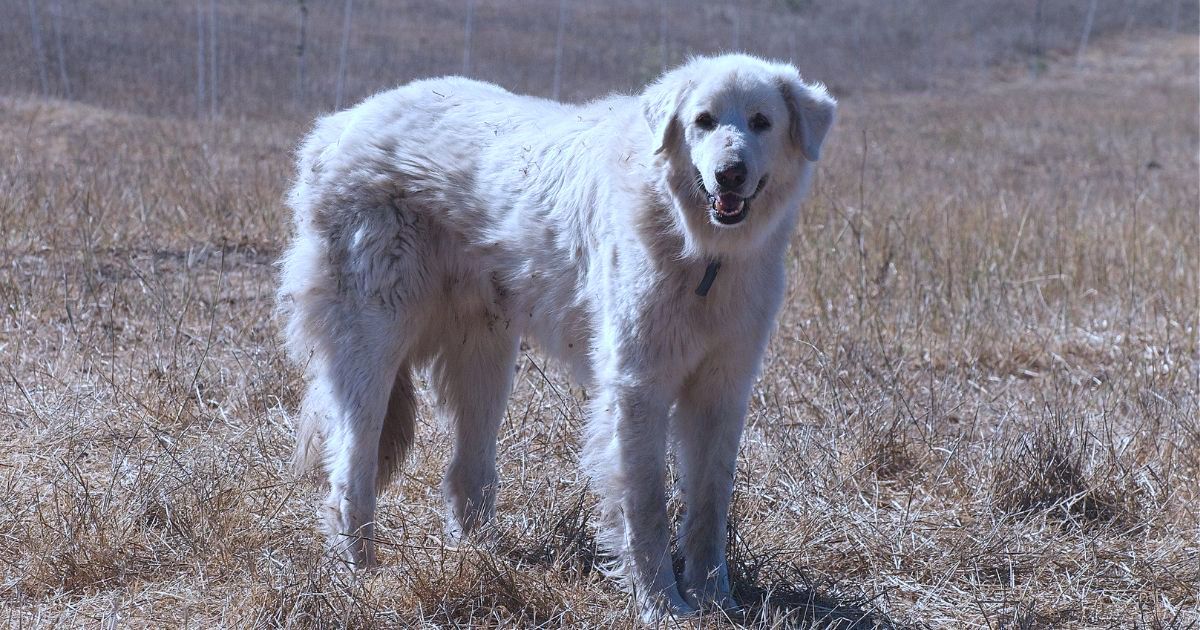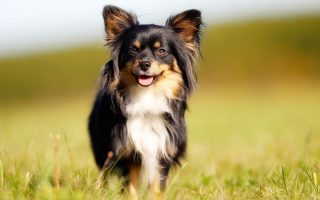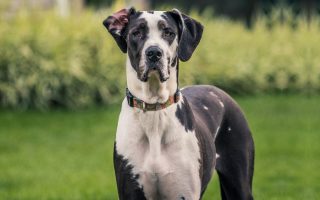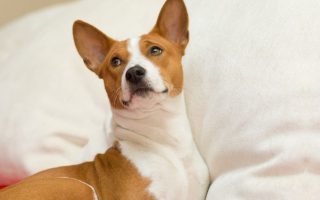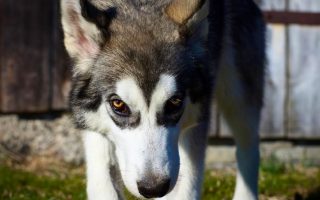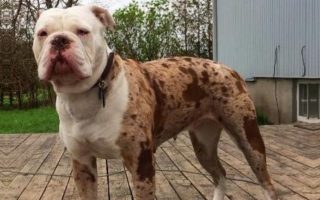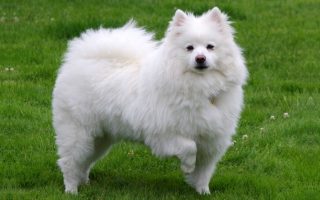A native of Turkey, the Akbash is a foreign breed with tons of qualities needed in any household. They also have requirements that should be met before they can call a place a home.
Getting a pet dog is a wonderful thing. Not only do you have a companion and a friend, but you also get some added advantages including loyalty, security, helping hands for work, a cuddle buddy, and a sports partner.
Whether you’re new on the journey or a veteran who wants to experience another adventure with a different breed, the pet quest is fun.
It can be daunting as well. It is one thing to fantasize about a little furry running around your living room, it is another to actually get one.
In the real world, you need to check a lot of criteria like energy level and lifestyle to make sure you fit with the breed of your dreams.
In this article, we bring you the complete Akbash dog breed information and facts, including characteristics, history, temperament, and more, to help you decide if the Akbash is the right dog for you.
Akbash Dog Breed Information & Key Facts

| Dog Breed Group | Workers |
| Height | 27 to 34 inches |
| Weight | 75 to 140 pounds |
| Coat | Medium, double |
| Color(s) | White |
| Life Expectancy | 10 – 12 years |
| Temperament | Loyal, alert, gentle |
| Origin | Turkey |
| Bred For | Guarding sheep |
| Nickname(s) /Other Name(s) | Coban Kopegi, Akbas Çoban Köpegi |
| Recognized by the AKC | No |
| Recognized by the UKC | Yes |
Akbash Characteristics
| Characteristics | Rating |
|---|---|
| Adaptability | 3/5 |
| Friendliness | 4/5 |
| Child Friendly | 4/5 |
| Pet Friendly | 3/5 |
| General Health | 4/5 |
| Grooming Needs | 3/5 |
| Trainability | 3/5 |
| Intelligence | 4/5 |
| Playfulness | 3/5 |
| Exercise Needs | 2/5 |
| Energy Level | 2/5 |
| Tendency to Bark | 3/5 |
| Tendency to Drool | 2/5 |
| Tendency to Snore | 1/5 |
| Tendency to Dig | 3/5 |
Little Known facts about Akbash Dog Breed
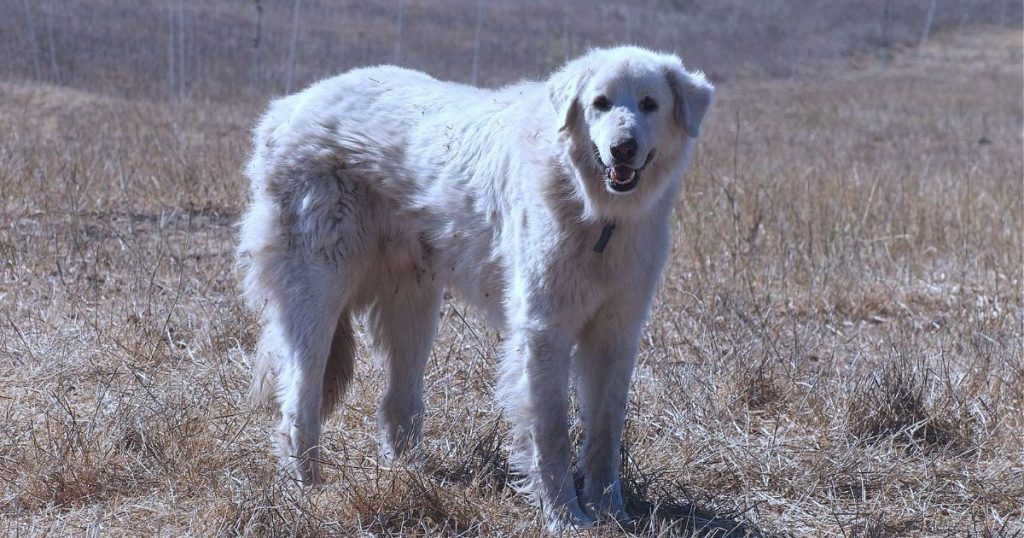
Fact #1: Akbash were bred to guard livestock
Akbash’s first purpose was to look after livestock, and they continue to play that role in rural Turkey today. They are not herders, however.
Unlike the German Shepherd, they don’t guide livestock except to steer them away from danger.
Their main aim was to keep watch. With their alertness, it wasn’t hard for them to detect danger.
Once they notice anything unusual—say, a wild animal—they alert their owners with a bark.
Fact #2: They always come with a white coat
Akbash is a plain white-coated breed. The color made it easy for them to camouflage.
There are no stripes or color mixture tainting the white, except around the ears where you find a little gray.
Some people have a thing for white dogs because of the aesthetic appeal.
If this is you, then you’ve got one strong reason to consider our Turkish friend.
Don’t forget that a white coat should be cleaned on a regular basis. It helps maintain purity and makes them beautiful.
Fact #3: They make good watchdogs
Akbash dogs still use their guardian skills in today’s America, except with a different purpose.
Instead of livestock, they watch over humans and their properties.
They have a strong sense of discernment and can often sense when someone is up to no good.
It is a warning sign if your dog shows discomfort consistently at the sight of someone.
They are not given to aggression and may not attack strangers, especially if well trained.
However, they would bark. They make good watchdogs.
Fact #4: They have thick fur
You don’t have to worry whether your Akbash can survive the harsh winter or wonder if you need to keep them cooped up indoors at the sight of the first snow.
Akbash dogs have furs that are thick. These furs cover them like a sweater during a cold climate.
Fact #5: They are calm dogs
Akbash are low-energy dogs who won’t always run around.
They love their space and won’t be all clingy with you. Separation anxiety isn’t their thing.
Their calmness doesn’t translate to shyness or laziness, however. Akbash remains confident and on alert.
Akbash Dog Breed History & Origin
Much of Akbash’s historical facts have been lost in the sands of time.
Nonetheless, it is believed that they existed 3000 years ago when they first started the business of guarding livestock.
With their white coats, they blended in with the sheep to confuse intruders. They are also recognized as the national dog of Turkey.
Akbash came into America courtesy of the works of Judith and David Nelson in the 1970s. The results of their work sparked interest in this breed.
It didn’t take long before the Akbash got to the shores of North America. In 1998, the United Kennel Club recognized them as guardian breeds.
Akbash is the biggest guardian dog in Turkey, topping breeds like the Anatolian Shepherd in size.
They are also believed to be ancestors of the Mastiff and sighthounds.
Akbash Temperament & Intelligence
Akbash is a rare breed with its own benefits and drawbacks.
Do note that the temperament of a particular dog depends on a lot of factors such as training, individuality, and gender.
Two Akbash dogs may not act exactly alike. Take what you get here as a broad stroke to help you understand how your Akbash is likely to act.
Akbash is a gentleman with a touch of chivalry towards his family. He is protective, loyal, and friendly with those he loves.
Always on the alert, he observes the environment to ensure no one comes against his masters.
Once he detects something or someone unusual, he lets out a warning bark. He also has a strong gut instinct that you shouldn’t overlook.
Besides his job as guardian, Akbash is a family pet. With a calm disposition and easy vibes, you don’t have to bother trying to keep up with his energy because it isn’t high.
This calmness isn’t shyness, but it does make an Akbash suspicious of strangers.
These dogs are usually not hostile, however. The wariness comes from old instincts that never died.
If you’re a busy 9-5 worker or an entrepreneur with little time for the indoors, Akbash dogs are cool with that.
In fact, they prefer being on their own and are independent enough to not wait for you to come back home before they keep themselves busy.
They enjoy their own company and are not prone to separation anxiety.
Is an Akbash a good family dog?
Akbash dogs make it easy to be with. They are gentle and loyal, traits that any family would like.
Rest assured they won’t slack in making sure you are protected. They are easy to keep up with as well.
You don’t have to deal with a hyperactive pet when you are with the Akbash.
However, don’t take this to mean that they are meant for everyone. Akbash dogs have their needs and challenges.
For instance, their independence makes it hard for them to obey their masters. New dog owners are not advised to get this breed.
Is Akbash good with kids?
Akbash Dogs flow well with kids as they do with adults. In fact, one may argue they love children more.
Back in their livestock guardian days, they looked after lambs and goat kids well enough. There is one thing to consider though. Children are energetic, noisy, and touchy-feely.
They would want to be all over your dog, a situation the Akbash will not appreciate.
Though they are patient with children and their size makes it easy to accommodate the excitement kids bring, they’d rather be around grown-ups or the bigger kids who won’t overwhelm them.
That said, if your child knows how to interact with a big dog like Akbash, they will flow.
Is Akbash good with other dogs and pets?
Akbash dogs have no natural inclination to coexist with other dogs and pets. They aren’t really interested in getting along or making a new pet friend.
They’d rather be the only animal in the room. However, training and socialization go a long way. If they are exposed to dogs and other animals as puppies, they’d grow up not minding that you have a cat.
The good news is they were never hunters, so their prey drive is low. You don’t have to worry about them chasing after a smaller animal.
Male vs Female Akbash
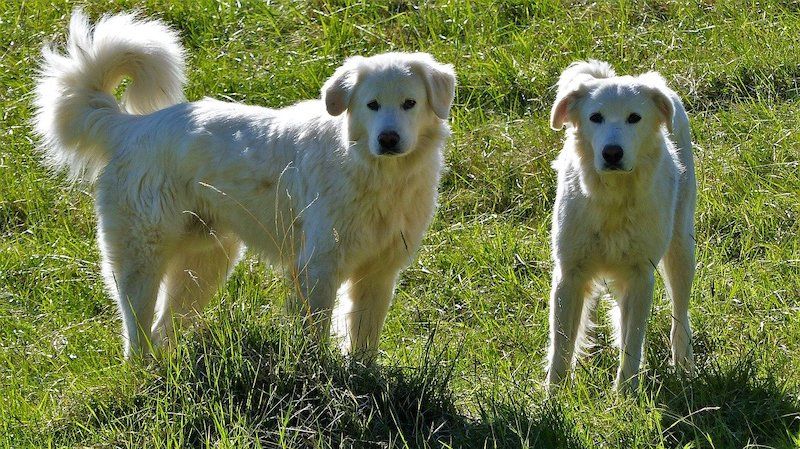
Just as humans have differences of sex, dogs have too. For some breeds, the difference isn’t spelled out. In others, you won’t miss it. While it may not be a thing to consider for some owners, it is for others.
Some pet parents prefer getting the female of a breed for reproduction purposes. It is also said that females are less aggressive than males, though this is not always a given and depends on the breed in question.
Others may prefer a male version for good reasons. Then there are neutral ones who don’t care. Whichever category you fall into, learning about their differences helps a lot.
The first difference between the male and female Akbash boils down to size. While the males have a height and weight of 32 inches and 140 pounds, the ladies are 30 inches tall and weigh 105 pounds.
It is obvious which gender is bigger. Another obvious difference would be their organs, as well as the fact that females can reproduce.
You can choose to get your dog neutered (for males) or spayed (for females). Some people may advise you to go ahead with these procedures and cite their advantages, others won’t because of the downsides. Ultimately, the decision is yours. Be sure to do your research and ask questions.
Caring for an Akbash
All dogs have health, exercise, feeding, training, and grooming needs. They need to live long, workout, eat, get trained and look proper.
Take your Akbash to the vet for constant checkups. If you also detect any abnormal activities or a hint of infection, don’t hesitate to get them treated. Some ‘little’ medical conditions can lead to bigger complications if left unchecked.
Your vet can also help you develop a care routine that suits your individual Akbash. What we give here is general information. Your dog may have some quirks that differ from the norms.
Meanwhile, though Akbash dogs aren’t given to high exercise, you still need to get them moving to prevent obesity.
This also means regulating their food intake. Bear in mind their age, current size, and laid-back disposition while dishing out their meal.
Their calmness doesn’t mean they are fit for apartment living, by the way. Due to their size and reputation as barkers, they are not suitable for an apartment.
Their white double coat comes in handy when winter arrives, just as it did while they were outdoors guarding flocks. That coat needs some grooming and trimming, as do other parts like their teeth and ears.
Akbash Food and Diet
Good food makes a big difference between a balanced healthy Akbash and an obese—or underweight— counterpart. For them, as with other dogs, dieting and proper meal proportioning are essentials.
The risk of a poor meal is not worth it.
Give your Akbash a meal rich in nutrients. Keep in mind their size and get a diet fit for large dogs.
Do not be negligent with their meals as that can endanger them. Akbash dogs, in particular, are prone to obesity because of their low energy.
An adult Akbash do well with 2 small meals a day. Quality dry food gives this breed the nutrition they need. Also, Akbash dogs need a lot of meat.
Remember, Akbash dogs get obese with ease, so do not overfeed them. Obesity brings with it weaknesses and various other complications that would drain your income and endanger your pet.
If you notice your dog is putting on weight, check his meal and exercise rate. Counsels from a veterinarian can equally go a long way.
Here are some nutrients good for an Akbash:
- Protein
- Fiber
- Water
- Minerals
- Fruits and vegetables
Also Read: Best High Fiber Dog Foods
Conversely, do not feed them meals that contain:
- Alcohol
- Garlic
- Chocolate
Puppies have specific puppy feed and different ration compared to adult dogs. The development stage of pups is essential, thus, you should know what to feed them and how. When in doubt, consult a veterinarian.
As a general rule, the Akbash puppies start out with 4 meals a day at 8 to 12 weeks. It goes down to 3 meals a day at 3 to 6 months. Once they get to six months, 2 meals suffice.
The old Akbash can be satisfied with fewer meals than puppies and growing dogs.
A nutrient you should reduce is carbohydrates. Too much of it can make them add weight.
Also Read: Bad Dog Foods to Avoid and Some to Consider
Akbash Exercise
Regular exercise is one of the aforementioned needs of both dogs and humans.
Whether your dog is a cuddler or a fighter, laid-back or active, a toy or giant, an introvert or extrovert, they need activities.
Lack of exercise can lead to several problems like:
- Boredom
- Obesity
- Health issues
- Behavioral problems
Obviously, their personality, size, and energy level should be taken into account when giving them an exercise regime.
While some dogs may be contented with a simple 20-minute walk, others won’t be satisfied till they get an hour of intensive and diverse activities.
Your personality and lifestyle matter too. If you’re a couch potato who’d rather sip coffee in the morning than hit the road jogging, energetic dogs will tire you. Ditto for busy people with no time to commit.
Akbash don’t require so much exercise as their energy level is low. Far from being energetic herders who’d nip at the heels of livestock and move alongside them, Akbash dogs stayed at the side to watch. They are calm, but shouldn’t be left completely idle.
A moderate level of exercise for 20 to 30 minutes is enough to keep them in good shape.
Physical exercises that would be good for your Akbash include walks, light jogs, fetch, and even a fun game of tug of war. As you exercise their body, don’t neglect their minds. Akbash dogs are intelligent and need mental stimulation.
Akbash puppies are more agile than grown ones and need more activities, though not stressful ones. Pups are still growing and are too delicate for tough exercise.
Older dogs are even more laid-back and may wish to lie around all day. They still need to keep fit to avoid joint and breathing issues.
There are so many benefits to training, and so much need for it, you shouldn’t even consider getting a pet if you can’t train them.
Dogs are fun, sometimes cute, very friendly, and loving. But, they can also be troublesome, aggressive, noisy, destructive, amongst other problems.
The difference between a well-mannered dog and a wild canine is training.
As we’ve mentioned, there are similarities between the dog’s need for training and that of humans. Training starts with our parents who give us some dos and don’ts with consequences for disobedience.
Other institutions like the church and school contribute. As adults, we train ourselves in many ways. Some join the army, others attend seminars, etc.
The Akbash is not suited for new dog owners because of their independence and stubbornness. They are not submissive, neither would they be willing to co-operate with basic obedience training.
If you don’t want to end up putting your dog for adoption, be sure you have what it takes to train him.
Akbash need an alpha leader who shows confidence, firmness, and consistency. Keep them interested in training with diverse activities to prevent boredom.
Also, get them to meet new faces, places, and other animals. This would reduce their tendency to be suspicious of unfamiliarities.
Praise them with affirming words like good boy/girl when they achieve something. Give them a pat on the head, a treat, or any other reward for obedience.
There should be consequences for disobedience, but this shouldn’t be harsh or punitive. A simple rebuke will do the job.
Better to work on bad habits while they are puppies than struggling to ‘fix’ them as adults.
Akbash Grooming Needs
You gotta love the Akbash for her appearance. The white, double fur coat is sure to draw the admiration of people.
However, without proper grooming, your Akbash would appear blemished with a shabby appearance. This would not be good for you as well as your pet.
They don’t shed much so grooming isn’t a difficult task. If you learn how to and you have time, you can do it yourself.
Akbash’s coat is well suited for winter but reacts by shedding during the summer. It doesn’t do well in the heat.
As the season turns dry, be prepared with your brush and a vacuum cleaner for some grooming and cleaning. Fortunately, this doesn’t happen every time.
Brushing should be done once or twice a week to clear off old hair and dirt. Other parts like their teeth and nails should be taken care of, as well. Akbash’s don’t need regular baths, so it should be limited to when they get dirty. Brush him before giving a bath and clean off soap properly after the bath.
Grooming is a good time to check your Akbash for any unusual signs. If you notice sores, reddened eyes, swellings, or an unpleasant odor, get the vet’s attention.
Akbash Health Conditions
With good food, exercise, constant checkups, and grooming, Akbash stay healthy and live long enough.
However, they are not immune to all medical conditions. Some illnesses they are vulnerable to include:
Hip dysplasia
Hip dysplasia is inherited and can be avoided by checking the medical history of a puppy you want to buy. It targets the hips and brings about pains. Left unchecked, hip dysplasia can render your dog lame.
Bloating
Due to their low energy, Akbash dogs are prone to bloating. Bloating leads to a swollen stomach when it gets filled up with gas. Once you detect this, treat it as an emergency. It is a lethal condition.
Epilepsy
Progressive, scary, and potentially dangerous; epilepsy leads to seizures. These seizures are characterized by convulsions, attacks that can be either irregular or repetitive, etc.
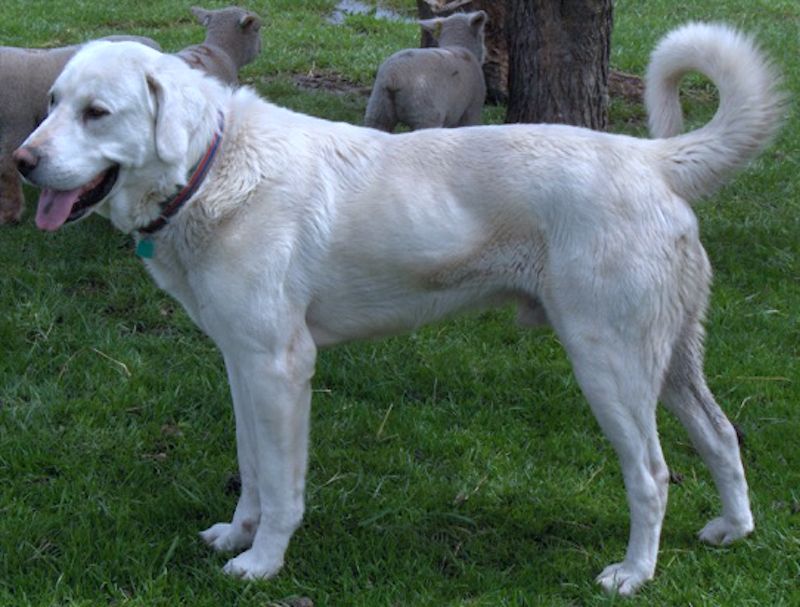
Frequently Asked Questions
Is an Akbash right for you?
Akbash are good watchdogs with many traits good for families. However, this doesn’t make them ideal for everyone.
There are some people who should not handle an Akbash. Those living in an apartment, new pet owners, and those who want a docile dog are not advised to get an Akbash.
If you are good to go with the requirements, you will find in the Akbash a gentle, loyal and devoted dog.
What are Akbash dogs known for?
Akbash dogs are rare, Turkish breeds that have been in existence for long. They are well known for their guardian instincts as they were bred for guarding livestock in Turkey. They are keen observers, which makes them good watchdogs.
How big is a full-grown Akbash dog?
An adult Akbash is a large dog and is considered the largest guardian dog in Turkey. They weigh 75 to 140 pounds with a height of 27 to 34 inches.
Do Akbash like to cuddle?
Akbash dogs are gentle and kind to their owners. However, they are not indoor pets, neither do they stay glued to their owners. They may not be a good bet for a cuddle buddy.
Is it hard to take care of an Akbash Dog?
Akbash are moderate shedders with low energy and a normal need for exercise. They are not hard to take care of as long as you get to understand their needs.
What is the lifespan of an Akbash dog?
Akbash dogs are generally healthy breeds and live long if sickness or an accident doesn’t cut them short. They have a life span of 10 to 12 years.
How Much are Akbash dogs?
Akbash dogs are rare outside Turkey. This makes them expensive to get, but worth it if you have the means. A puppy costs around $700 to $900. Adopting a grown Akbash cost about $300.
Do Akbash dogs shed?
Akbash are moderate shedders and hardly do so during winter. In the summertime, however, they lose their topcoat, leading to excess sheddings.
Final Thoughts
Understanding the Akbash dogs’ temperament and characteristics go a long way towards knowing if they are a perfect fit for you or your family.
This article on Akbash dog breed information and facts is a good start.
Akbash is certainly a challenge, but one that’s worth it if you can overcome it. His numerous qualities make him a good addition to any family able to accommodate him.
Related: Complete Alphabetical List of Dog Breeds
Useful Resource
- Official Profiles:
- United Kennel Club (AKC): Akbash Breed Standards

